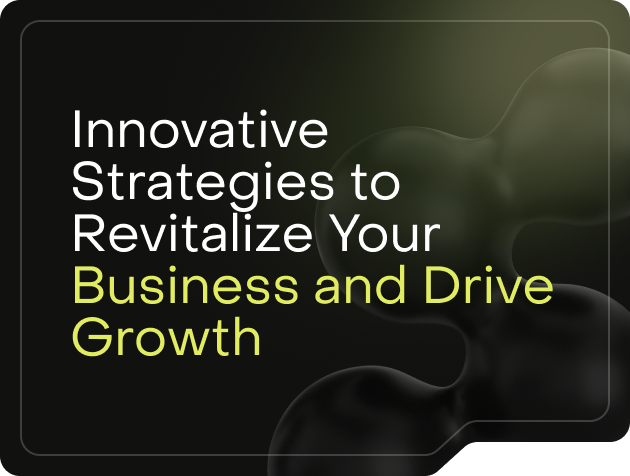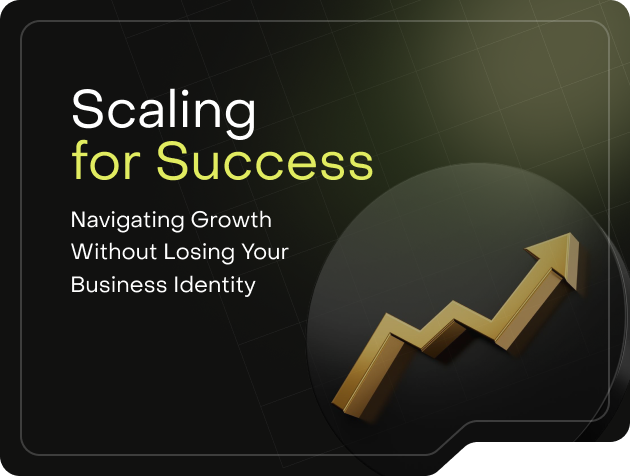Stagnant growth, frustrated customers, and a shrinking market share are all signs that your business desperately needs revitalization. It’s a common challenge but one that can cripple even the most established businesses. This plateau can be a source of immense frustration for leaders, as the foundation of the company’s success seems to be crumbling.
The answer is not simply repeating past successes but embracing the future. In today’s dynamic marketplace, clinging to outdated strategies is a guaranteed path to irrelevance. Innovation is the lifeblood of a thriving business. It’s the spark that reignites customer interest, unlocks hidden potential, and propels companies toward a future of sustainable growth.
This article is your comprehensive guide to revitalization. We’ll delve into the root causes of stagnation, offer actionable strategies to cultivate a culture of innovation, and, ultimately, drive your business toward a future of unprecedented success.
Understanding Your Business for Growth
Before launching innovative strategies, it’s crucial to gain a clear understanding of your current business landscape. Understanding your strengths, weaknesses, target audience, and the overall market is essential for ensuring your innovative ideas hit the mark.
Conduct a SWOT Analysis
Imagine a detailed blueprint for your business. A SWOT analysis offers a clear view of your internal capabilities, like your strengths and weaknesses, and the external environment, like your opportunities and threats, that shape your success. By dissecting these elements, you can identify opportunities to leverage your strengths, address weaknesses that might hold you back, capitalize on emerging trends, and prepare for potential challenges.
Strengths
Strengths are the internal capabilities and resources that give you an advantage over competitors. Think about what makes your business truly stand out. It could be a loyal customer base, a team of industry experts, or a unique product or service offering.
Weaknesses
Weaknesses are areas where your business is lacking or underperforming. Consider your internal limitations, like outdated technology, limited resources, or a lack of fresh ideas. Identifying these weaknesses allows you to target them for improvement through innovation.
Opportunities
Opportunities are external factors that your business can exploit to achieve growth. Where can you find new avenues for growth? Are there unmet customer needs you can address with innovative solutions? Can you leverage a new technology to gain an edge in the market? Opportunities lie in the gaps between your current state and your desired future state of growth.
Threats
Threats are external challenges that could hinder your progress. What external factors could disrupt your success story? It could be the arrival of new competitors, a shift in customer preferences towards new trends, economic instability, or evolving regulations. By anticipating threats, you can develop proactive strategies to mitigate their impact.
Re-Evaluate Your Target Audience
Your target audience is the foundation of your business success. They’re the driving force behind your products and services, and their needs and preferences are the cornerstones on which you build. But just like the ground beneath your feet, these needs can shift over time. It’s crucial to regularly re-evaluate your target market and gain a fresh perspective on your ideal customer.
Customer demographics evolve. Your ideal customer base may mature in age or income level, migrate to new locations, or even be replaced by new demographics attracted to emerging technologies. Staying informed about these shifts ensures your solutions remain relevant and meet the current market’s demands.
Consider your ideal customers’ challenges and aspirations. What keeps them up at night today might be different from yesterday. Delving deeper into the current struggles, goals, and desired outcomes allows you to develop innovative solutions to address their changing needs.
Adopt a Customer-Centric Approach
While innovative products and technologies can grab headlines, the most potent strategy for revitalizing your business and driving growth might be hiding in plain sight: your customers. To restore your business, prioritize a customer-centric approach that places their needs and desires at the forefront of your strategies.
Imagine your business with a single customer. They’d receive your unwavering attention, personalized solutions, and exceptional service. Your customers’ needs, wants, and frustrations become part of your innovation roadmap. This approach empowers you to gather real-world feedback through surveys, social media, and direct interactions. This data fuels the development of products and services that directly address customer needs, propelling you ahead of the curve.
By truly understanding your customers, you can personalize their experience, fostering loyalty and repeat business. In today’s crowded marketplace, this focus on customer needs sets you apart from the competition.
Embrace Emerging Technologies
Staying ahead in the business world requires embracing and integrating emerging technologies. These innovations can streamline operations, enhance customer experiences, open new revenue streams, and revolutionize your business.
New technologies such as automation and artificial intelligence can handle repetitive tasks more efficiently, freeing your team to focus on high-value activities. Imagine streamlining your supply chain, automating customer service interactions, or optimizing production processes, all powered by cutting-edge technology.
Technologies like virtual reality and personalized marketing can craft more engaging and interactive experiences for your customers. Consider offering immersive product demonstrations, tailoring marketing campaigns to individual needs, or providing real-time support through AI-powered chatbots.
By embracing these innovations, you open the door to a future of streamlined operations, enhanced customer experiences, and sustainable growth. It’s more than just an innovative strategy; it’s the engine that drives your business towards a thriving future.
Leverage Digital Marketing Strategies
While still relevant in specific contexts, traditional marketing channels can struggle to keep pace with the dynamic nature of the digital age. Customers today are flooded with advertising messages across countless channels. Reaching your customers requires a targeted and strategic approach. Digital marketing strategies offer a powerful toolbox to cut through the noise, reach new audiences, engage existing customers, and propel your business forward.
Content Marketing
Content marketing goes beyond simply creating content; it’s a strategic approach to establishing your brand as an industry thought leader. Create engaging content like informative blog posts, articles, or infographics that solve problems, answer questions, and add value to your customers’ lives.
This focus on value creation extends far beyond immediate brand awareness. Targeted email campaigns featuring helpful content or exclusive offers nurture existing leads and keep your brand top-of-mind. It fosters long-term customer relationships, a key driver of repeat business.
Content marketing is also a strategic investment in building trust and authority. As you consistently deliver valuable content, your brand is seen as a trusted source of information, leading to increased brand awareness and credibility. This newfound authority translates to a competitive edge, attracting new customers and solidifying trust with existing ones.
Search Engine Optimization (SEO)
Imagine potential customers searching online for exactly what you offer. With a strong SEO strategy, your website appears at the top of search results, directing qualified traffic straight to your doorstep. SEO ensures your website ranks higher for relevant keywords, putting your brand in front of the right audience at the right time.
Compared to traditional advertising, SEO offers a cost-effective approach. You reach a broad audience organically without breaking the bank by strategically integrating relevant keywords into your website content. Additionally, organic search results hold more credibility with potential customers than paid ads. This trust factor positions you for long-term growth.
SEO is an ongoing investment that yields lasting results. As you refine your strategy and consistently create high-quality content, your website’s authority and ranking improve. It ensures your brand remains visible to a broader audience over time, fueling sustainable growth for your business.
Social Media Marketing
Social media platforms offer unparalleled chances for businesses to engage with their audience, build brand visibility, and foster interaction. Effectively leveraging these platforms can be an innovative strategy to revitalize your business and drive growth by reaching a wider audience and fostering deeper connections with your customers.
Start by identifying the platforms most popular with your target audience: Facebook, Instagram, Twitter, LinkedIn, or others. Each platform has unique features and user demographics, so tailor your content to maximize impact. Share a mix of promotional content, industry news, and behind-the-scenes looks at your business to keep your audience engaged and informed.
Respond promptly and genuinely to comments, messages, and mentions to cultivate a sense of community and trust. Foster discussions and acknowledge your followers’ contributions to create a loyal and active following. By maintaining an authentic presence on social media, you establish strong relationships with your audience, drive long-term brand loyalty, and continuously reinvigorate your business image, ensuring sustained growth and relevance in a fast-paced digital world.
Build a Culture of Innovation
Cultivating a culture of innovation transcends simply encouraging employees to brainstorm new ideas. It’s about fostering an environment where experimentation is embraced, open communication is encouraged, and innovative thinking is rewarded. This shift in mindset is what makes it a creative strategy.
Embrace calculated risks and unconventional approaches to unlock the door to groundbreaking solutions. Employees unafraid to push boundaries are more likely to develop ideas that disrupt the status quo and propel their business forward. While celebrating successes, big and small, learning from failures fosters a safe space where innovation thrives under solid leadership.
Leaders who champion a forward-thinking mindset and the courage to explore new ideas set the tone. You create a powerful innovation engine that drives sustainable growth by empowering employees to take ownership and recognize their contributions.
Break Down Barriers & Expand Your Reach
Clinging to a limited customer base can stifle growth in today’s competitive landscape. Market expansion, however, unlocks fresh opportunities. It’s an innovative strategy that ensures your business remains agile and relevant for the long haul, broadening your reach, reducing dependence on a single market segment, and igniting new revenue streams.
Identify New Markets
Conduct in-depth customer research to discover hidden gems: new applications for your product or service that resonate with previously untapped demographics. Imagine entirely new customer segments where your existing strengths can shine. This targeted expansion leverages your expertise while reaching fresh audiences, propelling significant growth.
Consider geographical expansion to regions with high growth potential. It could involve entering international markets or targeting underserved areas within your existing market. Understand the cultural, economic, and regulatory differences that might impact your entry strategy and tailor your approach accordingly.
Additionally, identify niche markets that align with your strengths. These might be smaller segments with specific needs that your competitors have overlooked. By offering specialized solutions and driving growth through targeted efforts, you can build a loyal customer base and establish a strong presence in these niches.
Develop New Products & Services
To remain relevant, you must constantly innovate. Analyze your customer base to understand their evolving needs and identify gaps in current market offerings. What problems do they face? How can you solve them with groundbreaking solutions that capture new market segments?
Don’t limit yourself to product development. Explore innovative service offerings that enhance the customer experience and build deeper brand loyalty. It could involve subscription models, personalized consultations, or value-added services that complement your core product.
Think outside the box and go beyond incremental improvements. Consider what new solutions you can offer that address unmet customer needs or revolutionize your industry. Push boundaries and develop groundbreaking offerings that expand your market reach, attract new customer segments, and propel your business toward a future of sustainable growth.
Unlock Your Growth Potential
The business landscape constantly evolves, and stagnation is a recipe for decline. The key to unlocking explosive growth and revitalizing your brand is embracing innovation. The spark ignites fresh ideas, propels you ahead of the curve, and allows you to meet customer needs and anticipate them.
By fostering a culture of innovation, you position your business to thrive in a competitive marketplace, leaving behind the shackles of stagnation and embracing a future of sustainable growth.
With over 12 years of experience building and growing over 400 brands, AVINTIV’s award-winning agency boasts a proven track record of success. We don’t just offer generic solutions; our team of experts specializes in crafting innovative strategies tailored to your unique business needs.
Ready to break free from stagnation and propel your business towards explosive growth? Contact AVINTIV today. Let’s work together to transform your vision into reality and unlock your growth potential!




